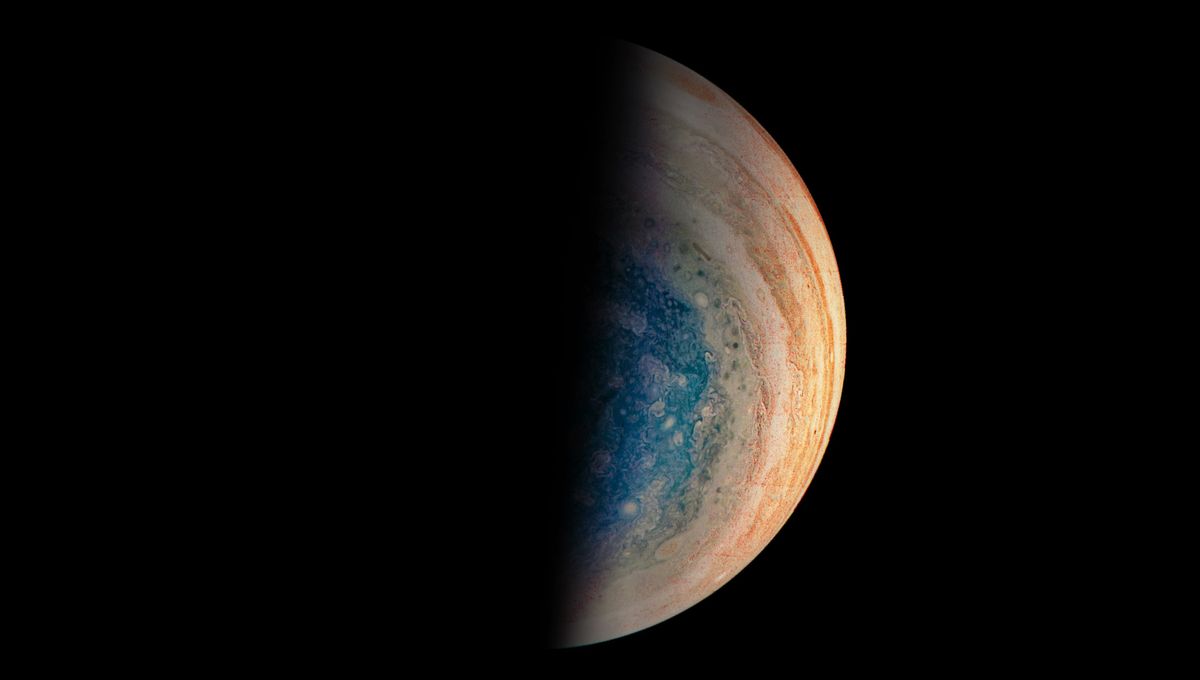If we define an ocean as simply a large body of liquid, then the biggest ocean in the Solar System is inside Jupiter. Not that it would be anything like we are used to. Under enormous pressures and high temperatures, hydrogen is in its metallic liquid state, sloshing about the planet’s interior. This is responsible for the planet’s strong magnetic field and its peculiarities.
And new research shows that it is peculiar indeed. Changes happening within a four-year period indicate there is more complexity inside the planet, and observations from Juno over the last several years have connected what goes on in the atmosphere with magnetic anomalies.
At first approach, Jupiter’s magnetic field is very similar to Earth’s but 20 times stronger. There is a dipole, which means that there is a north and a south, so the magnetic field lines connect one pole to the other. But that is not all. The volcanic moon Io produces a lot of plasma that affects the magnetosphere of Jupiter, and there is a long magnetic band in the northern hemisphere.
But a true oddity is located around the equator. It is a vast, sort-of circular region that was nicknamed the “Great Blue Spot”. The spot is not actually blue, unlike Jupiter’s Great Red Spot – the name comes from the color coding of magnetic fields, red for north, blue for south.
In the latest analysis, researchers found an atmospheric jet associated with the Great Blue Spot. Some of Juno’s recent orbits have studied this region in particular and shown that there are periodic variations. A first hypothesis suggested that this might be related to convective flow deep within the metallic hydrogen ocean. That would be expected to take centuries, but the changes seen here are way too fast.
With the wave-like fluctuations repeating every four years, the team is suggesting two different hypotheses. The fluctuations could be caused by oscillation around the axis of rotation of the planet or by Alfvén waves, which are waves moving along the magnetic field lines. The scenarios are very different, so the team hopes to find more details to be able to differentiate between the two.
Juno continues to produce observations crucial to expanding our understanding of the planet Jupiter and its mysterious interior. And with follow-up to this work, we might better understand the development of magnetic fields in giant planets.
The study is published in the journal Nature.

